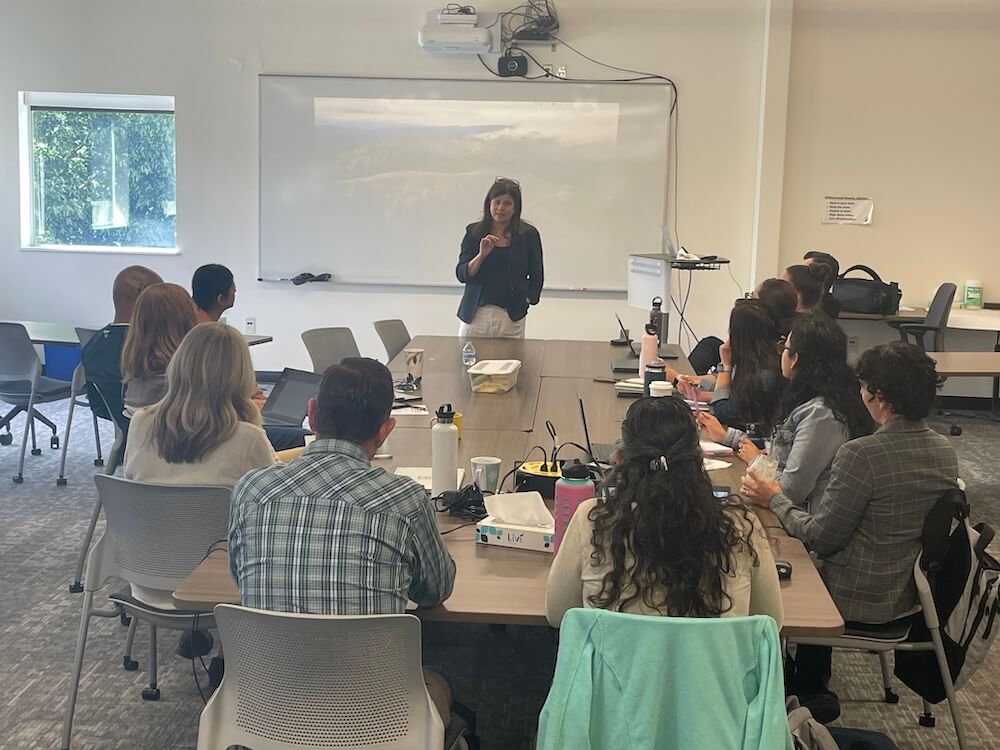
Building Systems of Opportunity in Language Acquisition: The Three Necessary Shifts
Written by: Amelia Larson, Chief Academic Officer, Summit K12.
As the school doors swing open for a new year, the excitement and promise of fresh beginnings fill the air; this is the perfect moment to move beyond the outdated notions and embrace necessary shifts.
Today we will discuss the first necessary shift: The Integration of “Learning to Read” and “Reading to Learn” for Lifelong Success.
For years, the adage, “In K–3, children are learning to read, and in 4–12, children are reading to learn,” has guided literacy instruction in schools. However, recent research suggests this separation may be overly simplistic, overlooking the importance of oracy, language development, and knowledge-building in literacy instruction. This is particularly important for teaching and supporting Multilingual Learners (MLLs) because a simultaneous, more functional approach to language development and literacy instruction focuses on using language for a variety of registers, purposes, and audiences in service of communicating and learning content.
The Problem with the Old Paradigm
The traditional approach often leads to a narrow focus, potentially missing out on critical aspects of language and literacy development. Young children can and should engage with content-rich lessons through read-alouds and interactive activities that foster language development, reading skills, and knowledge building.
Research Supporting a Simultaneous Approach
Current research advocates for a simultaneous approach to reading instruction rather than a sequential one. According to Duke et al. (2021), “Given the absolute necessity of foundational word reading skills, it is tempting to think that instruction should begin with a focus on developing those and later turn to comprehension.”
However, studies show young learners benefit from developing oral language comprehension, even as they build phonological awareness and print concepts. For instance, read-alouds can enhance oral comprehension of written language from an early age (Cervetti, 2020; Swanson et al., 2011).
Scholars like Fillmore (2017), Scarcella (2003), and Mesmer (2020) have highlighted the need for a comprehensive and integrated approach that blends language-based and code-based skills. This strategy involves using rich texts to immerse students in foundational literacy while also building knowledge year after year.

Implications for a Simultaneous Approach
It starts early! Neuman and Fillmore, 2024 emphasize the importance of early learning experiences and providing a knowledge rich curriculum. The Knowledge Matters Campaign identified four major attributes of a high-quality, evidence-based, knowledge-building preschool curriculum beyond foundational skills:
1. Content-Rich Read-Alouds: Engaging topics like space travel or weather, with targeted vocabulary.
2. Diverse Texts: Stories, informational texts, and more, presented in sequence with key vocabulary.
3. Language Enrichment: Teaching related words, phrases, and ideas, including academic vocabulary.
4. Extended Learning: Activities that prompt students to draw on their knowledge and use complex language.

10 Evidence-Based Teaching Recommendations
It requires incorporating all that we know about language and literacy development into curriculum choices and instructional practice! The Scientific Advisory Committee (2023) of The Knowledge Matters Campaign published a series of blogs on ASCD highlighting ten critical recommendations that have strong evidence:
1. Build from Birth: Knowledge-building starts in infancy through interactions with caregivers and play. Creating language-rich environments helps children develop oral language in their home language(s).
2. Grow Vocabulary: Students can learn vocabulary through explicit instruction and incidental exposure. Reading informational texts aloud is a great way to foster vocabulary growth.
3. Lead Discussions: Intentionally lead discussions that promote student talk and comprehension. This strategy can build and support knowledge acquisition.
4. Give Read-Alouds a Central Role: Read-alouds and text-based discussions allow young students to engage with complex ideas and vocabulary, building a foundation for more sophisticated texts.
5. Foster Foundational Skills: Integrating knowledge-building with foundational skills development ensures students develop word-reading and spelling abilities while building content knowledge.
6. Apply Sense-Making Strategies: Teach strategies that support understanding and learning from text, such as attending to text structure, previewing, and summarizing.
7. Engage and Excite: Build on students’ interests to maximize cognitive engagement. Provide opportunities for students to apply what they learn in real-world contexts.
8. Curriculum Counts: Implement a knowledge-rich, coherently sequenced, and well-executed curriculum to support student and educator success.
9. Use Texts as Tools: Include a variety of texts, including informational genres and literary texts like biographies or historical fiction, to enrich student knowledge.
10. Safeguard Science and Social Studies: Strong instruction in these areas can help build literacy skills. These topics should be included in the curriculum.

Conclusion
The traditional separation between “Learning to Read” and “Reading to Learn” is a false dichotomy; it is time to move beyond it. A blueprint for Multilingual Learners lifelong success requires a comprehensive and connected approach that brings “Learning to Read” and “Reading to Learn” together from the start.
The research shared in this article invites educators to scrutinize their instructional approaches and use integration as a way to create systems of opportunity to maximize outcomes. Transforming language and literacy instruction through content is not only effective and achievable, but also efficient. A comprehensive and connected approach that explicitly addresses language, literacy, and learning ensures the needs of Multilingual Learners are addressed by attending to both broad language-based skills and foundational code-based skills.
We invite educators and families to explore these research findings further, collaborate on best practices, and take actionable steps to build knowledge-rich environments that empower every learner; every Multilingual Learner. Let’s move forward with a shared commitment to elevating language and literacy instruction through content.
Our students are counting on us.
About the Author

Citations
- Cervetti, G. N. (2020). “The Role of Knowledge in Reading Comprehension.” Reading Research Quarterly, 55(S1), S1–S12.
- Duke, N. K., Cervetti, G. N., & Wise, C. N. (2021). “The Science of Reading: Supporting the Transition from Learning to Read to Reading to Learn.” Journal of Literacy Research, 53(4), 1–25.
- Fillmore, L. W. (2017). “Supporting English Learners in the Classroom.” Educational Leadership, 74(5), 38-43.
- Mesmer, H. A. E. (2020). “Connecting the Dots: Vocabulary and Reading Comprehension.” The Reading Teacher, 74(2), 193-203.
- Newman, S. & Fillmore, L. W. (2024) For Stronger Readers in Third Grade, Start Building Knowledge in Preschool https://knowledgematterscampaign.org/post/for-stronger-readers-in-third-grade-start-building-knowledge-in-preschool/ retrieved from the Knowledge Matters Campaign
- Scientific Advisory Committee, 2023 Ten Practical Recommendations for Educators from Our Scientific Advisory Committee https://knowledgematterscampaign.org/post/ten-practical-recommendations-for-educators-from-our-scientific-advisory-committee/ retrieved from the Knowledge Matters Campaign.
- Scientific Advisory Committee (2023). Looking to Research for Literacy Success https://ascd.org/blogs/looking-to-research-for-literacy-success retrieved from ASCD Blog
- Swanson, E. A., & Wexler, J. (2011). “A Synthesis of Research on Reading Interventions for Older Students with Learning Disabilities.” Learning Disabilities Research & Practice, 26(2), 79–89.







